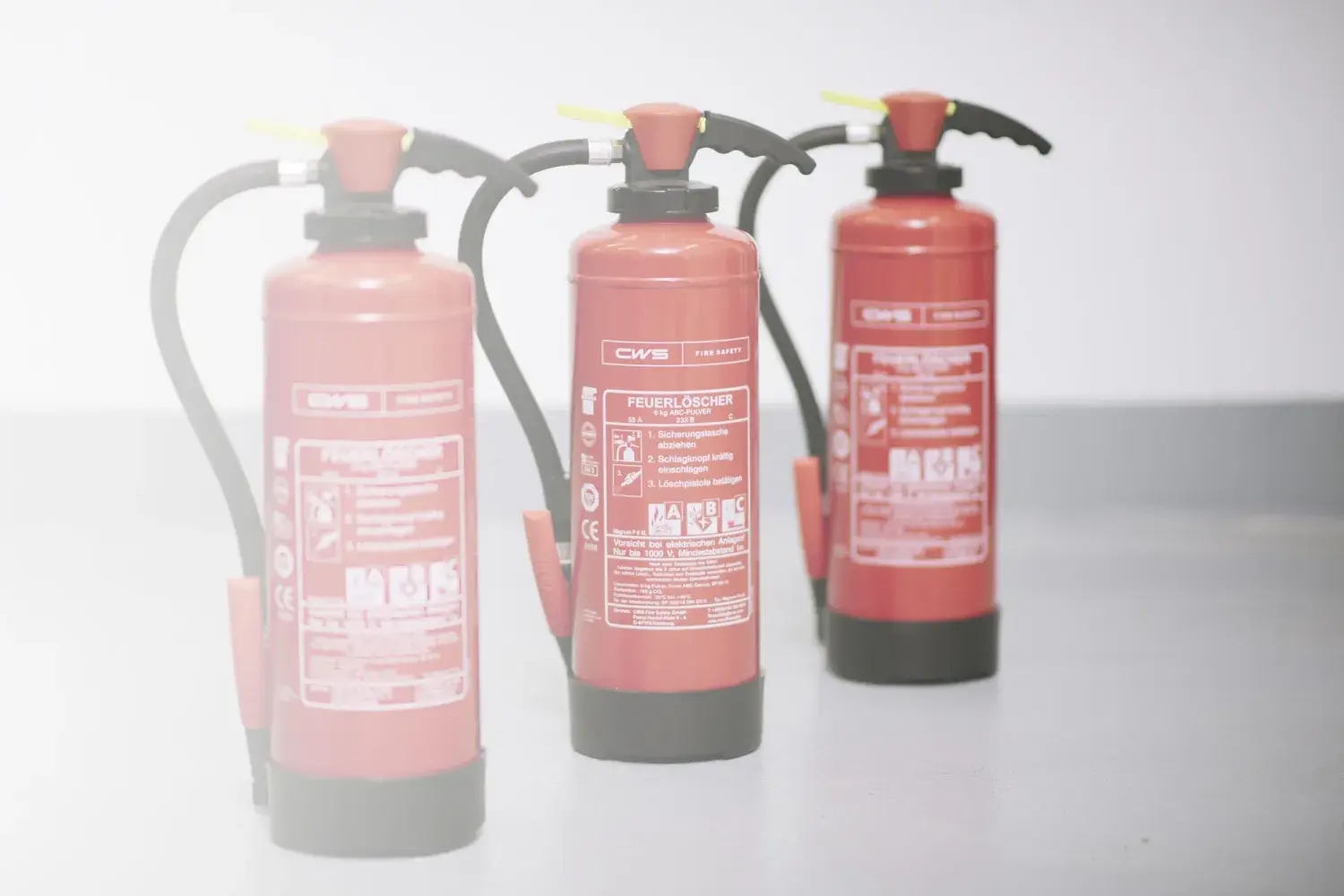Choosing the right fire extinguisher
First of all: Not every fire extinguisher can be used for all types of fires. Decisive is on the one hand the fire class or the material that burns and on the other hand the extinguishing agent in the fire extinguisher. We show you which fire classes and types of fire extinguishers there are and when you should use which fire extinguisher.
Fire class A
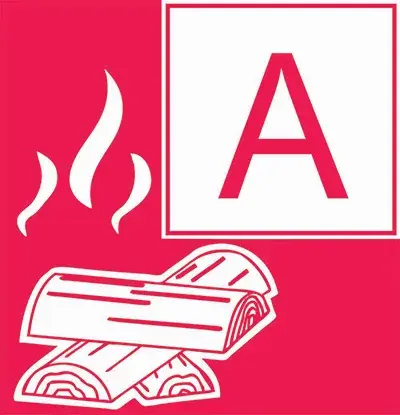
- Fire material: Fires of solid, non-melting materials. Either formation of an ember and flames.
- Example: Wood, hay, straw, paper, cardboard, textiles, coal, car tires, non-melting plastics.
- Extinguishing agent: Powder extinguisher with ABC powder, water extinguisher, foam extinguisher, grease fire extinguisher
Fire class B
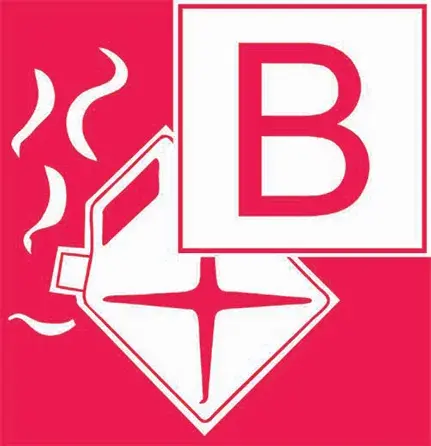
- Fire material: Fires of liquid substances or substances that become liquid.
- Example: gasoline, tar, varnish, oil, alcohol
- Extinguishing agent: ABC and BC powder extinguishers, foam extinguishers, carbon dioxide extinguishers / CO2 extinguishers, grease fire extinguishers
Fire class C
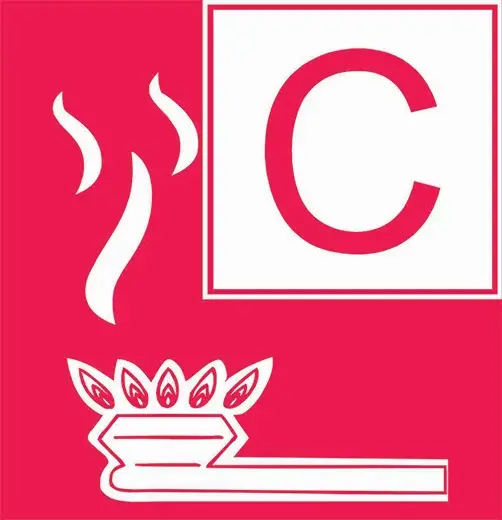
- Fire material: Fires of gases
- Example: methane, propane, hydrogen
- Extinguishing agent: ABC and BC powder extinguishers
Fire class D

- Fire material: Fires of metals
- Example: aluminum, magnesium, potassium, sodium
- Extinguishing agent: Powder extinguisher with metal fire powder
Fire class F
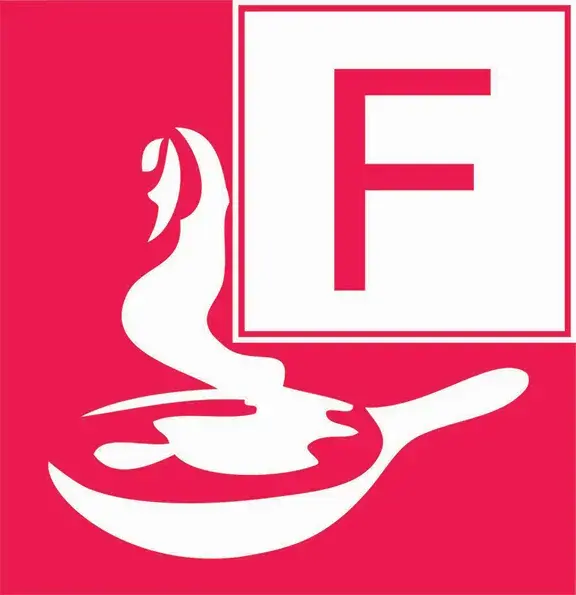
- Fire material: fat fires in deep-fat fryers and fat-baking equipment, pots and pans.
- Example: cooking oil, deep-frying fat
- Extinguishing agent: grease fire extinguisher
Download overview fire classes A B C D F
Fire extinguisher applications
E-car, e-bike or cell phone on fire
Incipient fires of objects containing lithium batteries can best be extinguished with a lithium fire extinguisher (fire class D). However, lithium always reignites, and a lot of water is needed to finally extinguish the fire. Until the fire department arrives, you can also extinguish with a garden hose.

TV or computer on fire
It is best to use the carbon dioxide extinguisher (fire class B). Alternatively, foam extinguishers (fire class A and B) or ABC powder extinguishers (fire class ABC) would also work. The advantage of carbon dioxide is that surrounding electrical equipment is not damaged. Please do not pour water on electrical equipment!
Gas stove in camper burns
ABC powder extinguishers (fire class A, B and C) work best, they are frost-proof and extinguish not only the gas stove, but also cable fires. However, they have the major disadvantage that the electronics or the engine can suffer great damage, because the powder settles into every little crack. Alternatively, the foam extinguisher (fire class A and B) would be possible, but not for the gas stove, but for the electronics in the camper without damaging surrounding equipment.
Grease or oil burns in the kitchen

If the pan, pot or deep fryer is on fire, the fat fire extinguisher (fire class F) is best suited. Please do not pour water over it and do not use a fire blanket! Water can cause an explosion. The fire blankets only smother smaller flames, in the case of larger ones, the fire blanket itself may catch fire or not completely smother the flame.(1)
One person burns
Preferably water extinguishers, alternatively also foam extinguishers. In principle, powder extinguishers (caution: danger of suffocation) or carbon dioxide extinguishers /CO2 extinguishers (caution: danger of frostbite) are also suitable. Never hold the hose of the fire extinguisher in the face, but start with the upper body. Any extinguisher is better than the fire blanket, please do not use it.(1)
Personal protection before property protection
The basic rule is: personal protection before property protection. Do not put yourself or others in danger. Only extinguish if it is still a small fire. Once the fire is extinguished, remain at the danger point and, preferably with another full fire extinguisher, observe whether there is a renewed build-up of gluten or flames and repeat the extinguishing attempt until the fire department has arrived.
Download overview fire classes A B C D F
Do you have questions about fire classes or fire extinguishers?
Source: (1) https://publikationen.dguv.de/widgets/pdf/download/article/3703 (DGUV, Einsatz von Löschdecken, 04/2020)
